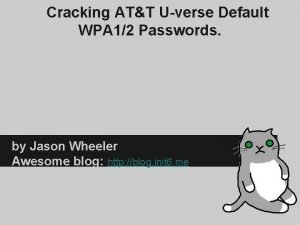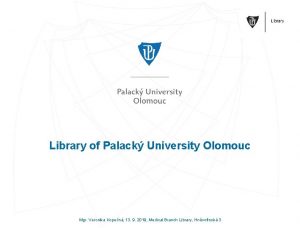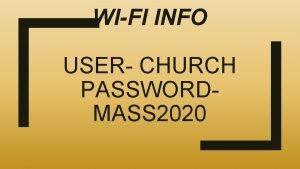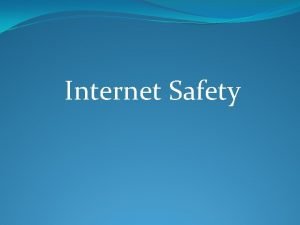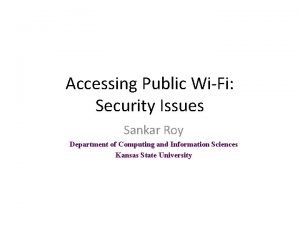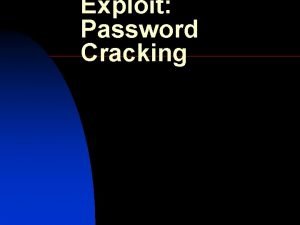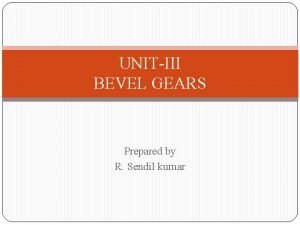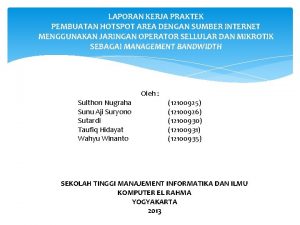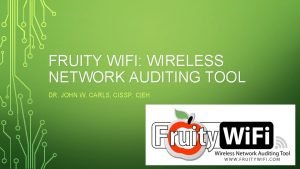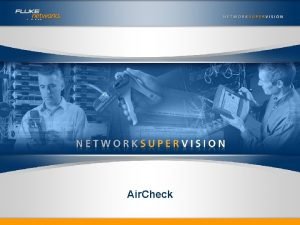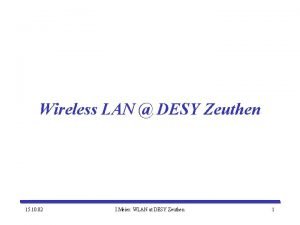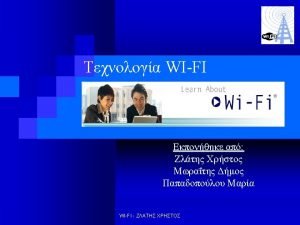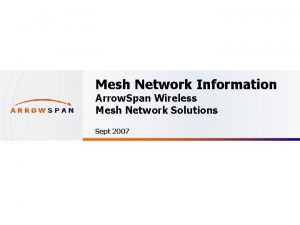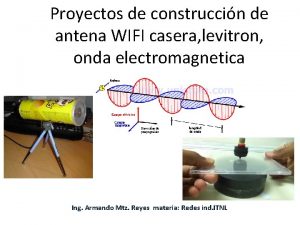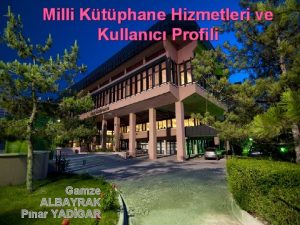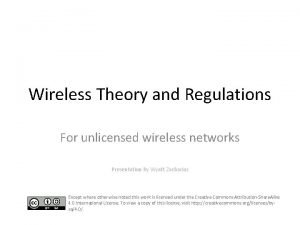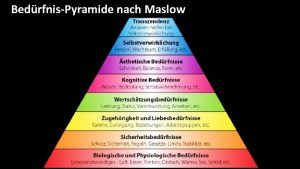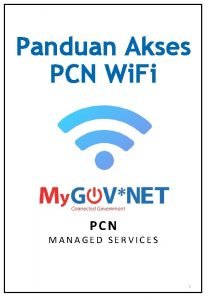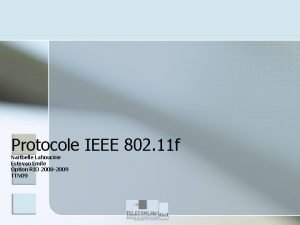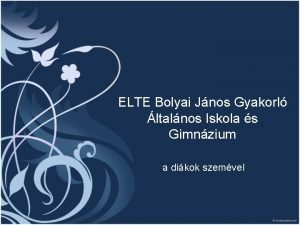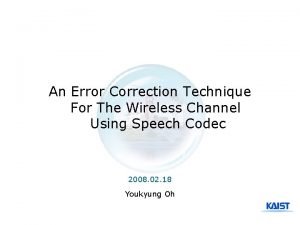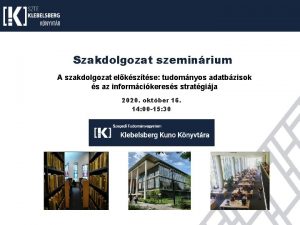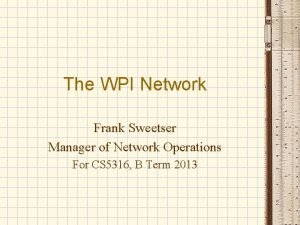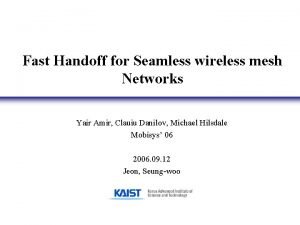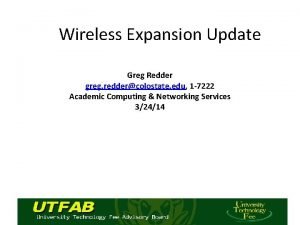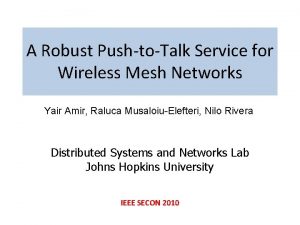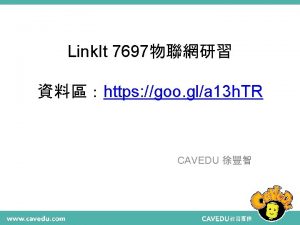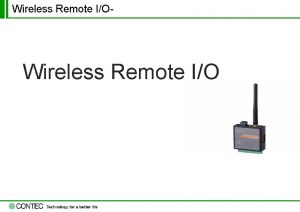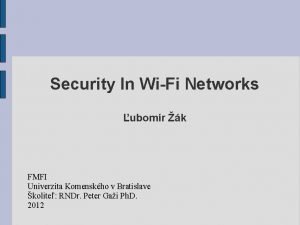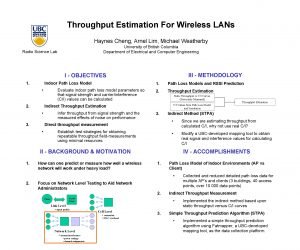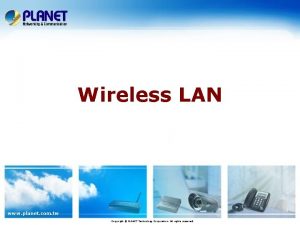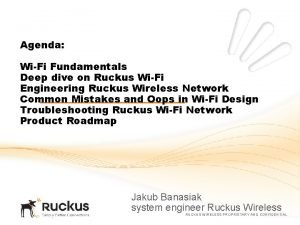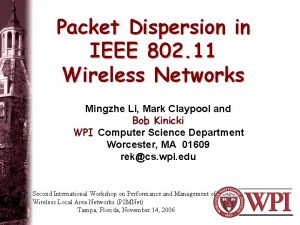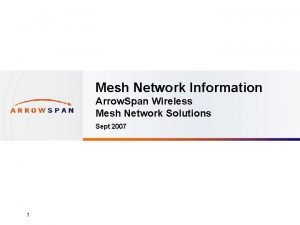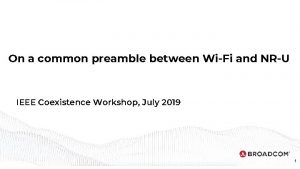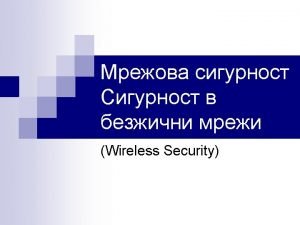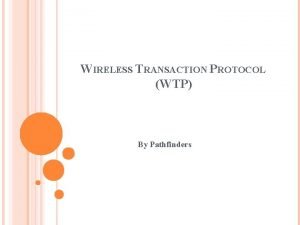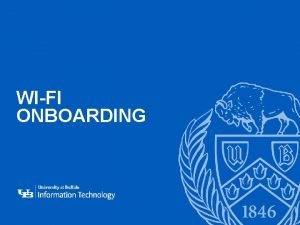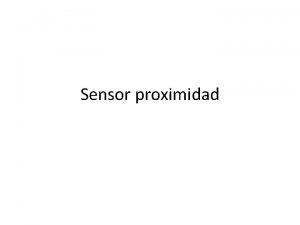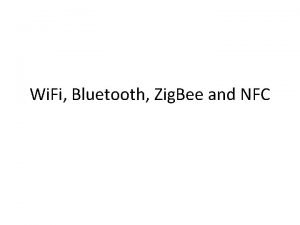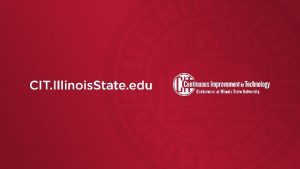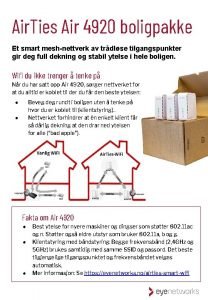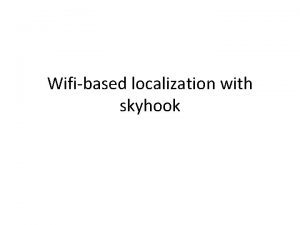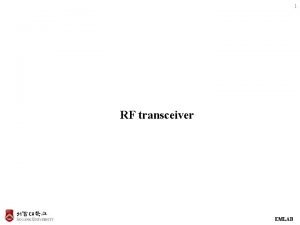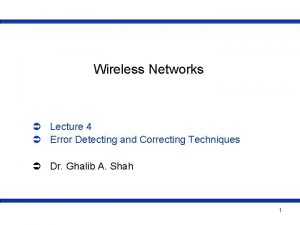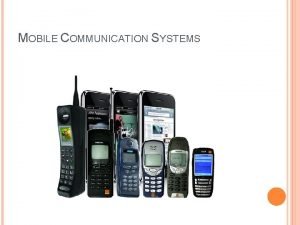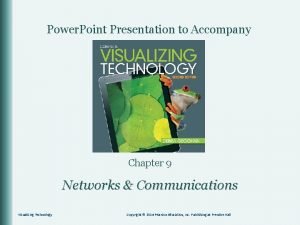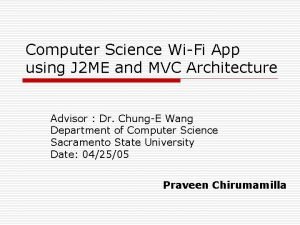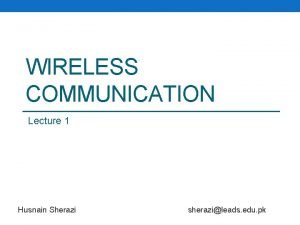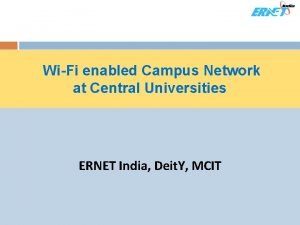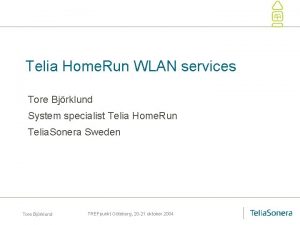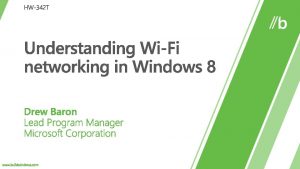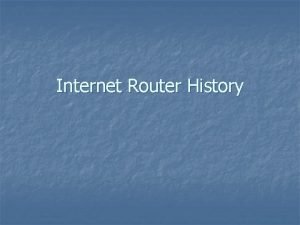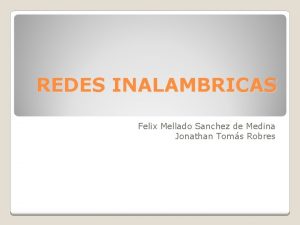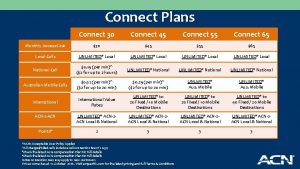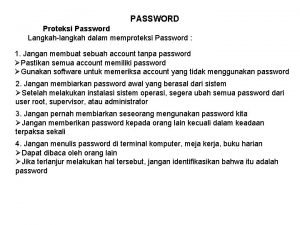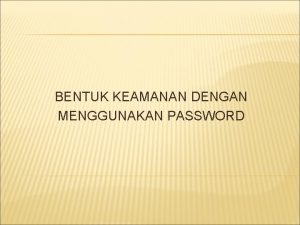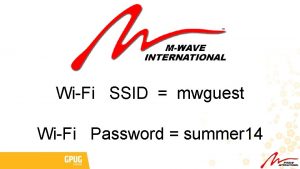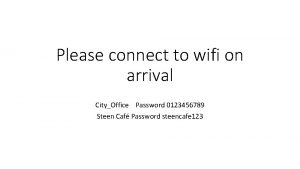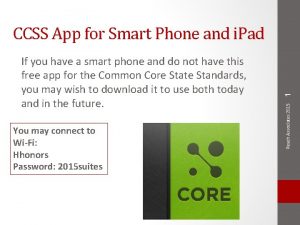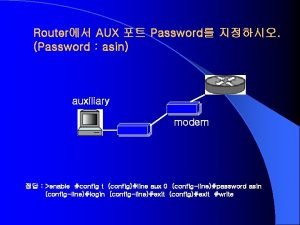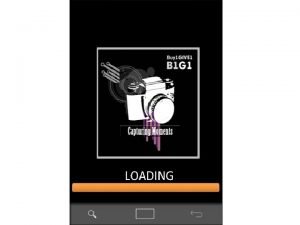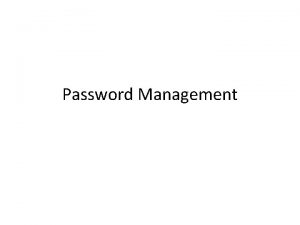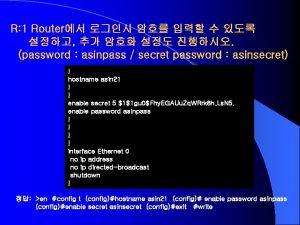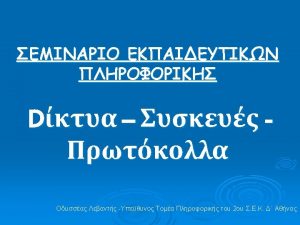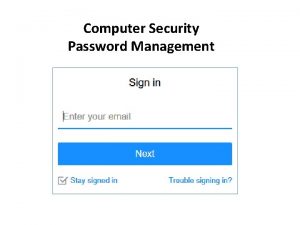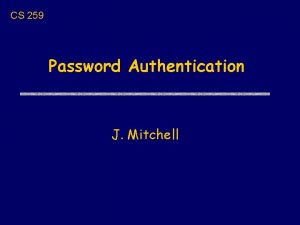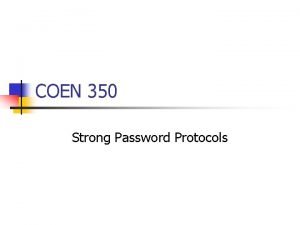Connect to wifi Use JCGuest password zh G
![Connect to wi-fi: Use JC-Guest, password: zh. G 647([]ZIX MI-litary Equivalency Project Campus Planning Connect to wi-fi: Use JC-Guest, password: zh. G 647([]ZIX MI-litary Equivalency Project Campus Planning](https://slidetodoc.com/presentation_image_h/3221fdd4607cbff43add18288bdf9a67/image-1.jpg)











































































- Slides: 76
![Connect to wifi Use JCGuest password zh G 647ZIX MIlitary Equivalency Project Campus Planning Connect to wi-fi: Use JC-Guest, password: zh. G 647([]ZIX MI-litary Equivalency Project Campus Planning](https://slidetodoc.com/presentation_image_h/3221fdd4607cbff43add18288bdf9a67/image-1.jpg)
Connect to wi-fi: Use JC-Guest, password: zh. G 647([]ZIX MI-litary Equivalency Project Campus Planning Seminar June 2, 2017

Welcome & Introductions

Objectives for Today Explore ACE tools available to streamline credit mapping for JST credit recommendations Review artifacts from other campuses who have begun this work, including databases of completed credit maps and templates developed to track campus ACE credit mapping activities Facilitate campus planning processes to identify priority areas, build appropriate campus coalitions, and consider the business processes required to implement these strategies Discuss next steps forward progress, including preparation instructions for participation in the September 26, 2017 multidisciplinary ACE credit mapping summit

With gratitude to CMVE’s sponsors and partners in this work!

Framing Discussion

Michigan Military Equivalency Project Campus Planning Seminar June 2, 2017 Patricia Brewer, Ed. D. American Council on Education Midwest Regional Liaison

Center for Education Attainment and Innovation (CEAI) College and University Partnerships CREDIT Evaluations (Corporate Programs) Academic Innovation Military Evaluations Programs “To be the world class organization that transforms lives through innovative practices across all forms of learning. ” 7

Credit for Prior Leaning: The Context 8

What’s in a name? Clarifying Competency Based Education Terms: A Lexicon (ACE and Blackboard, 2014) http: //bbbb. blackboard. com/Competency-based-education-definitions 9

Why PLA Now? Changing learners New sources for learning Increasing Persistence & Retention Economic pressures Leveraging technologies Decreasing cost & time to degree College completion focus Meeting Public expectations Focus on competency 10

What Is Prior Learning Assessment? A set of well-established, researched and validated methods for assessing noncollegiate learning for college credit. A process that allows learners to demonstrate knowledge and skill in particular field or fields and have that learning evaluated for college credit. 11

CPL Classifications Individual Student Evaluation Institutional Evaluations Departmental Challenge Examinations Individualized Portfolios Third-party Evaluations CLEP Exams Advanced Placement Exams (AP) DSST Credit by Exam Excelsior College Exam Program Sponsored Learning Program Evaluation CAEL Learning. Counts© includes a structure for individual student portfolios to be developed and then assessed by either institutional faculty or CAEL assessors. Local Articulation ACE Military Training and Agreements Occupation Review Consortium for the ACE CREDIT Review Assessment of College Equivalency (CACE) National College Credit Recommendation Service (NCCRS) ®Brewer and Marienau, 2016 12

Higher Learning Commission and CPL • 4. A. The institution demonstrates responsibility for the quality of its educational programs. – 2. The institution evaluates all the credit that it transcripts, including what it awards for experiential learning or other forms of prior learning, or relies on the evaluation of responsible third parties. 13

ACE National Perspective 2016 -2017 14

Today’s Focus: Military Credit Options MI-litary Equivalency Project 15

MCMC CMVE’s MI-litary Equivalency Project Learn more on the website and access resources, or archived webinars. What is MCMC? Grassroots efforts began in 2012. Formalized in 2014 in coordination with MHEC following USA Funds and Lumina Foundation awards. Includes 13 states: IL, IN, IA, KS, KY (not a MHEC st), MI, MN, MO, NE, ND, OH, SD, WI. Leadership is provided by MHEC staff and a Steering Committee with representation from each participating state. MCMC workgroups: Articulation of Academic Credit Communications and Outreach Data, Systems, and Technology Licensure and Certification

MI-litary Equivalency Project Goals 1. 2. 3. Build institutional capacity to establish direct transfer equivalencies ACE credit recommendations on JST. Support institutions in articulating military experience to general education requirements and building equivalencies for specific Military Occupational Specialties (MOSs). Showcase developed equivalencies in institutional transfer equivalency databases.

Community of Practice Cross-Institutional Dialogue Resource-sharing Best practices, lessons learned Interdepartmental Engagement Subject Matter Expertise

MEP Landscape Assessment Survey

MEP Landscape Assessment Survey

Building Institutional Capacity Form and convene work group Ensure common language Assess veteran academic experience Military competency crosswalks

MEP Highlighted Resources See https: //micmve. org/military-equivalency-project/ for more on-demand resources Previous Events – Catch up on what you may have missed! 11. 9. 16, Building Campus Strategy for the MI-litary Equivalency Project. Click here to view the slideshow from this webinar. Click here to review the event’s recording. 11. 29. 16, Talking PLA and Transferability, presented by the Council on Adult and Experiential Learning (CAEL). Click here to access the slide deck from this presentation. Click here to review the event’s recording. 1. 26. 17, The ACE Review Process- Insights from MI Faculty. Click here to access the event recording. Click here to review the slideshow from this webinar. See the Faculty Reviewer Informational Flyer to learn more about becoming an ACE faculty reviewer. Click here to review details from the Q and A session at the end of the session. 4. 21. 17, Exploring Campus Workflows Around Awarding Direct Credit for JST, featuring Community College of Baltimore County and the University of West Georgia. Click here to review the slideshow for this webinar. Click here to review the event recording and see the MEP website for supporting documents. 5. 21. 17, A Closer Look at DSST Exams. The slide deck from this webinar can be downloaded here. Recording coming soon!

MCMC Highlighted Resources See http: //www. mhec. org/mcmc-resources for more resources, including the MCMC Bridge Program Inventory Selected archived webinars – • Military and Alternative Credit Slides | Webcast • February 14, 2017, The Ins and Outs of ACE Military Evaluations Slides | Webcast • July 26, 2016, SOLID (Solutions for Information Design, LLC) Data on Servicemembers and Veterans Slides | Webcast | All MOCs to O-NETS | Healthcare MOCs to O-NETs • April 19, 2016 Exploring Healthcare Bridge Programs for Veterans, featuring Lansing Community College Slides | Webcast • December 14, 2015, Prior Learning Assessment: An Overview of Relevant Criteria and Assumed Practices, featuring: Karen J. Solomon, VP Accreditation Relations and Director, Standard Pathway, Higher Learning Commission Slides | Webcast Upcoming events – • Tuesday, June 20, 10: 00 AM CT | REGISTER - Servicemembers Opportunity Colleges (SOC) Degree Network System Rebooted • Friday, June 23, 1: 00 PM CT | REGISTER - Defense Language Institute Foreign Language Center – An Overview

Innovations from MI Institutions Military science or other minors geared toward veterans General Education diversity requirements foreign language credit for DLI or other proficiency communications, leadership, management PE/wellness MOSs articulation-type agreements Healthcare Occupational Fields IT Flexible PLA policies around CLEP and DSST

State-Level Transfer Initiatives in Michigan – A Brief Overview MACRAO Transfer Agreement (1972) MTA (2014) Michigan Transfer Network (2006/2007) FY 18 appropriations request CWID/Reverse Transfer Right Math at the Right Time – Math Pathways MI-litary Equivalency Project Transfer Steering Committee Statewide leadership committee dedicated to improving statewide transfer student outcomes and integrating state-level transfer initiatives Statewide Associate to Baccalaureate Transfer Pathways

Time to Chow!

Seminar Topic 1: Building Your ACE Credit Translation Toolkit

Seminar Topic 1: Building Your ACE Credit Toolkit 28

Let’s start with a brief needs assessment Where does your institution “stand” with CPL Implementation? 29

Show of Hands My institution has little understanding and information on prior learning and limited institutional interest in building the program. 30

Show of Hands My institution has general understanding and information on prior learning, with demonstrated institutional interest in building the program. 31

Some indicators of emerging practice • • Advisory groups Conference attendance Consultants Rely on advisor and program coordinators for student service • Seeks policy and practice models; scans the landscape 32

Show of Hands My institution acknowledges the role of prior learning in postsecondary pathways. It has begun to develop standard policies and procedures for managing CPL. 33

Some indicators of developing practice • Creates opportunities for information sharing across campus • Involves faculty in setting and vetting policies • Shares information with students on the website and in group orientation sessions • Develops organizational infrastructure and management roles; begins to 34 coordinate programs and services

Show of Hands My institution has broad and deep understanding of credit for prior learning policies and uses that knowledge to integrate and sustain systematic and accessible CPL practices. 35

Some indicators of effective practice • Supports professional development of faculty and staff; uses CPL in annual reviews, recognitions, and tenure decisions • Shares CPL options before student admission; provides expert advising; sophisticated communication with students • Strategically selects diverse CPL tools; applies credit throughout program; wellmanaged policies and practices; CQI in place 36

Credit for Prior Learning: Charting Institutional Practice for Sustainability (ACE, 2015) 37

Gaining Capacity with an Institutional Toolkit 38

What is in the toolkit? Mission and vision for military credit award College Catalog Course Syllabi Joint Services Transcript Military Guide Online Course and Program Learning Outcomes Glossary and Tour Guide Expertise Institutional Transfer of Credit Policy Statements 39

First tool: Faculty and staff who can move between two cultures, languages, and educational intentions 40

Institutional Resources: How would you describe the following tools? • College Catalog • Course and Program Learning Outcomes • Course Syllabi including objectives • Transfer of Credit Policy Statements – Mission and vision for military credit awards 41

What institutional value is served? • Serving students with integrity – giving credit where credit is due • Living the institutional mission: Focus on lifelong learning • Full implementation of learning outcomes assessment • Retention and Completion 42

What are the ACE and Military Resources for the Toolkit? • Military Guide Online, based upon Military Evaluation Program (catalogesque) • Joint Services Transcript 43

The Military Guide www. acenet. edu/militaryguide 44

Evaluation Activities • Central educational authority • Formal assessments verification Military Evaluations Program- Evaluate formal courses and occupational specialties within the military and recommend college-level credit. • Firm identification of the student • 45 academic hours (minimum) 45

The Art of an ACE Military Review USA ~ Training and Doctrine Command (TRADOC) USMC ~ Training and Education Command (TECOM) USN ~ Navy Education and Training Command (NETC) USAF ~ Air Force Voluntary Education (AF-A 1) USCG ~ Coast Guard Institute (CGI) Enlisted Limited Duty / Warrant Officers 46

The Course Review • Formal military instruction and military occupations specialties whose objectives, content and assessments are congruent and must be similar to one found at postsecondary level. • Instructor-driven courses with goals and outcomes, sequential topics, assignments and activities, content presentation, evaluation assessments and rubrics • Distance learning/online courses with documented rigid control test conditions and Correspondence courses with proctored end-of course exams 47

What is Reviewed? • Course syllabus • Textbooks • Assessment of Student Learning Outcomes • Student & instructor guides • Laboratory projects • Instructional support materials • Instructor Qualifications 48

The Occupation Review occupational standards to build faculty team & develop final recommendations: Interview service members: – Focus on representation of job expectations at each pay grade/skill level. – Clarify & validate official military documentation (occupation manuals, task standards, etc. ). – Maintain focus to determine if job knowledge, skills & abilities learned above & beyond formal military training are at postsecondary level. 49

Examination Reviews • Team reviews exam processes to include: – Program objectives – Subject matter expert qualifications – Training – Methods of test preparations – Testing methods • • • Test reliability Test validity Grading methods Updating procedures Use of proctors 50

Military Guide Course Exhibit • Home page updates and reminders • Three major exhibit display formats – 1954 to 2006 – 2006 to 2015 – 2015 to present • Version 51

Course Exhibit: NV-1715 -2246 v 1 AN/SPN-35 C Maintenance http: //www 2. acenet. edu/militaryguide/Show. Ace. Courses. cfm? ACEID=1335873 Instruction: Learning Outcomes: Upon completion of the course, the student will be able to troubleshoot and maintain the AN/SPN-35 C radar system. . Practical exercises, classroom exercises, and lecture. General course topics include electrical systems, electronic systems, timing devices, transmitters, receivers, indicators, system adjustment and test. Credit Recommendation: In the lower-division baccalaureate/associate degree category, 3 semester hours in radar systems (3/09) Related Competencies: Radar systems topics include electrical and microwave safety, Methods of Assessment: electrical power circuits, electromechanical positioning systems, electronic systems, radar Include quizzes, performance rubrics system indicators, and radar transmitters and (checklists), and examinations. receivers. 52

Key Components of the JST Transcript Core (Official) – – Course Completions Military Experience College-level Test Scores Other Learning Experiences (OLE) Summary Page (Unofficial) – Displays ACE credit recommendations only – SOC Transferability Codes Academic Institution Page (Unofficial) – College courses (Coast Guard, Marines, Navy) – Certificates, Degrees, Licenses and 53 Apprenticeships

JST Complexity and Validation https: //jst. doded. mil • • Member’s Individual Record • The JST ACE Guide Academically accepted document Validates a service member's occupational experience; formal military training aligns ACE college credit recommendations Owned and issued by the respective service – Central support services JST Operations Service’s Registrar System • ACE supplies data – performs quality checks on the transcript – cannot make changes to JST 54

JST Foundations (Army, Marine Corps, Navy, Coast Guard) 55

Using the JST and Online Guide Let’s take a look at Jill 56

15 Minute Break

Seminar Topic 2: Campus Planning

Seminar Topic 2: Campus Planning What are We Building Together? First…. . avoid the wrong questions……. . 59

Not: How do you do this? • But, is this worth doing? • And, is this something that I want to do? • Plus, is this something that my institution wants to do? Block, P. (2002). The answer to how is yes. San Francisco, CA: Berrett-Koehler Publishing. 60

Not: How long will it take? • Decide: Is faster better? • Identify: Are you looking for immediate change strategies? • Consider: If you change the structure will you change the culture? 61 Block, P. (2002). The answer to how is yes. San Francisco, CA: Berrett-Koehler Publishing.

Not: How much does it cost? • Consider: Will it be a problem if the cost is too high? • Decide: Should the economist be at the head of the table? Block, P. (2002). The answer to how is yes. San Francisco, CA: Berrett-Koehler Publishing. 62

Not: How do you get those people to change? • Consider: How likely is it to transform others? • Can you confirm that control is possible? • Decide: What is required of me right now? Block, P. (2002). The answer to how is yes. San Francisco, CA: Berrett-Koehler Publishing. 63

Not: How can we measure it? • But, Is measurement needed for control and oversight only? • And, who is served by measurement? • Consider: Is measurement needed for learning? • Decide: What measurement would have meaning to me? Block, P. (2002). The answer to how is yes. San Francisco, CA: Berrett-Koehler Publishing. 64

Not: How have other people done this successfully? • Understand: How can we customize to our context? Our institution? Block, P. (2002). The answer to how is yes. San Francisco, CA: Berrett-Koehler Publishing. 65

Talk at your table • Can you say “no” to this project? • What commitment are you willing to make? • What is the crossroads at which you find yourself at this point in the project? • What is your contribution to solving the issues associated with this project? • What do we want to create together? 66

What Can Be Built? Examples from National Initiatives 67

National Mapping Examples Ohio Department of Higher Education: https: //transfercredit. ohio. gov/pg_35 Fayetteville Technical and Community College http: //www. faytechcc. edu/military-veterans/credit-for-militarytraining/ Minnesota System: http: //www. mnscu. edu/military/transfer. html Ivy Tech (Indiana) https: //www. ivytech. edu/files/Military-Crosswalk. pdf Central Texas http: //www. ctcd. edu/degree_CPLns. html Coastline (California) http: //military. coastline. edu 68

Active Planning Session As seen at Fort Jackson U. S. Army Training Center in Columbia, South Carolina

Cross-Institutional Dialogue

Next Steps, Recap, & Closing Comments

Preparing for September Mapping Summit • Bring your institutional toolkit materials • Review any pre-work suggestions • Identify decision makers • If possible, find a tour guide 72

MI-litary Equivalency Project: Next Steps Step 1: Determine Priority Areas Step 2: Set specific goals and determine measurable milestones Step 3: Build and Develop Campus Coalitions Step 4: Consider Workflow Processes Step 5: Build communication strategies for key stakeholders Steps 6 -8: Implement, Evaluate, Adapt (aka wash, rinse, repeat)

MI-litary Equivalency Project: Next Steps Plan to join us! Radisson 111 North Grand Ave. Lansing, MI September 26, 2017, 10 AM-4 PM, Lansing, MI – MEP ACE Credit Mapping Seminar (open to all disciplines, with emphasis on healthcare and special strand for Nursing) September 26, 2017, 4 -6 PM, 5 th annual CMVE Conference Opening Reception September 27, 2017, 10 AM-4 PM, 5 th annual CMVE Conference, Serving Veterans in the Classroom. Special guests: Bryan Anderson and Dr. Eric Fretz

What about YOU? What are your next steps?

Thanks for your commitment to this work!
 Att wifi password
Att wifi password Upol wifi password
Upol wifi password Church wifi password
Church wifi password Ndsu baseline safety training
Ndsu baseline safety training Lcps secure wifi password
Lcps secure wifi password Daconi
Daconi How to connect to ksu wifi
How to connect to ksu wifi Brute force programa
Brute force programa Physical network topology
Physical network topology To connect two intersecting shafts we use
To connect two intersecting shafts we use Laporan kerja praktek jaringan wifi
Laporan kerja praktek jaringan wifi Fruity wifi
Fruity wifi How does wifi signal travel
How does wifi signal travel Tester canal wifi
Tester canal wifi Desy wlan
Desy wlan Wifi bsd
Wifi bsd Unibox login wifi-soft
Unibox login wifi-soft Outdoor wireless mesh network design
Outdoor wireless mesh network design Antena bluetooth casera
Antena bluetooth casera Ucopia wifi portal
Ucopia wifi portal Mkutup wifi
Mkutup wifi Kecepatan akses wibro mencapai
Kecepatan akses wibro mencapai Wifi theory
Wifi theory Maslow pyramide wifi
Maslow pyramide wifi Pcn wifi
Pcn wifi Wifi dance
Wifi dance Wifi iapp
Wifi iapp Kő papír olló ceruza faragó
Kő papír olló ceruza faragó Stellar wifi
Stellar wifi Wifi error correction
Wifi error correction Wifi huawei enterprise
Wifi huawei enterprise Marc train wifi
Marc train wifi Eduroam wifi jelszó szte
Eduroam wifi jelszó szte Wifi nethome
Wifi nethome Wpi wifi setup
Wpi wifi setup Toast
Toast Mesh wifi handoff
Mesh wifi handoff Csu eid wifi
Csu eid wifi Mesh wifi ptt
Mesh wifi ptt Login
Login Linkit 7697 wifi
Linkit 7697 wifi Wireless remote io
Wireless remote io Fmfi wifi
Fmfi wifi Automesh wifi
Automesh wifi Arnel wifi
Arnel wifi Wifi-soft solutions pvt ltd
Wifi-soft solutions pvt ltd World wifi day
World wifi day Planet usb wifi adapter driver
Planet usb wifi adapter driver Ruckus wifi planner
Ruckus wifi planner Mnet wifi
Mnet wifi Arrow mesh wifi
Arrow mesh wifi Wifi unimi
Wifi unimi Wifi preamble
Wifi preamble Wifi beaconing
Wifi beaconing Los wifi artinya
Los wifi artinya Wtp allows for
Wtp allows for Roaming wifi là gì
Roaming wifi là gì Wi-fi onboarding
Wi-fi onboarding Detección de proximidad wifi
Detección de proximidad wifi Zig wireless
Zig wireless Isunet-starthere
Isunet-starthere Hjelp med airties
Hjelp med airties Skyhook gps
Skyhook gps Wifi transceiver block diagram
Wifi transceiver block diagram Ruckus ready partner program
Ruckus ready partner program Gree wifi module
Gree wifi module Wifi error correction
Wifi error correction Revo pico wifi internet radio
Revo pico wifi internet radio Ethernet vs wifi
Ethernet vs wifi Wifi 2me
Wifi 2me Ethernet vs wifi
Ethernet vs wifi Iitd wifi settings
Iitd wifi settings Telia home
Telia home Wifi packet coalescing
Wifi packet coalescing The first router
The first router Googlh
Googlh Estándares wifi
Estándares wifi
